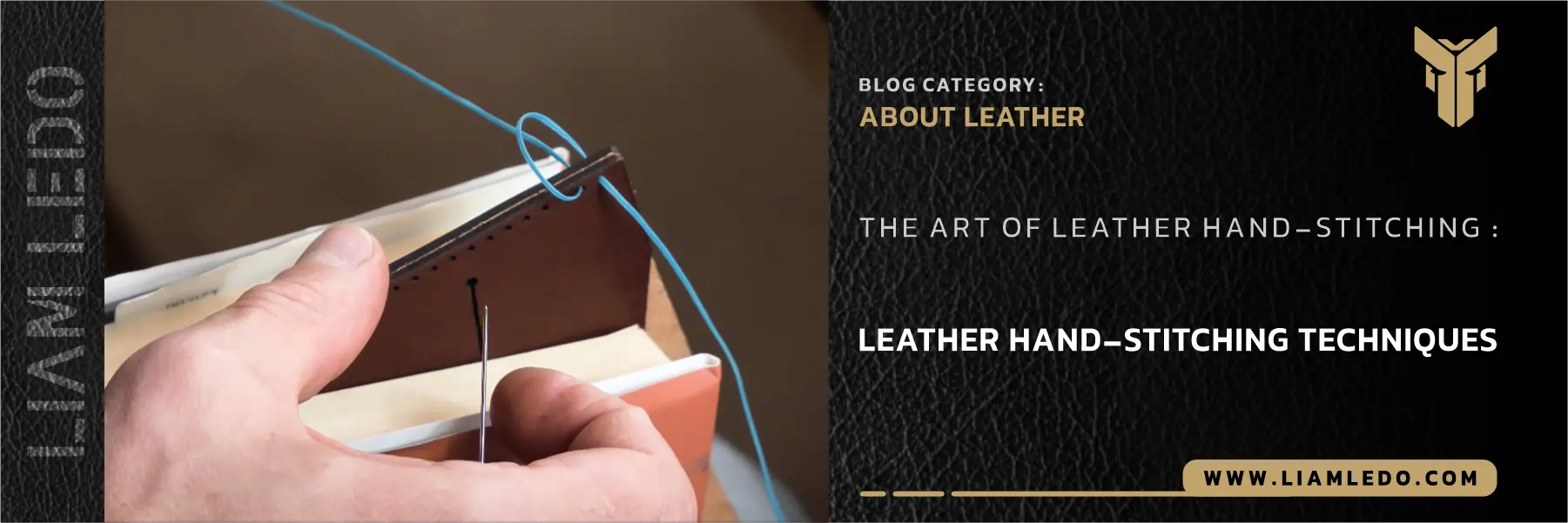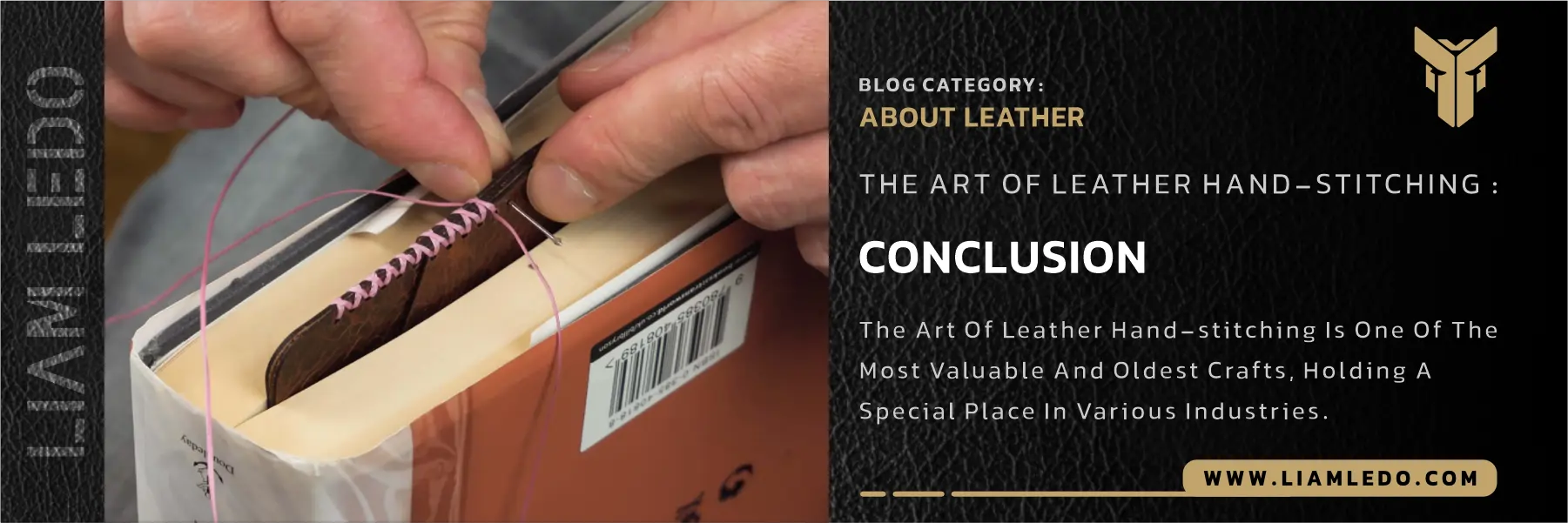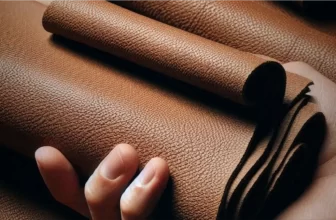
The art of leather hand-stitching is one of the oldest and most valuable crafts, holding a special place in the culture and craftsmanship of various societies throughout history. This art involves various processes, including design, cutting, stitching, and decorating leather, all carried out with meticulous care and precision. This article delves into the intricacies of leather hand-stitching, the techniques and tools involved, and its significance in the modern world.
History of Leather Hand-Stitching:
Leather hand-stitching has a long history that dates back to ancient times. Humans have used leather as a durable and resilient material for making clothing, shoes, bags, and various tools. Over time, the art of leather hand-stitching gradually evolved into one of the most important crafts across different cultures.
In Iran, the art of leather hand-stitching particularly flourished during the Safavid era. During this period, workshops produced high-quality and beautiful leather goods using advanced techniques and specialized tools. This art has been preserved over time and has become a hallmark of Iranian culture and craftsmanship.
Tools and Materials Needed:
Leather hand-stitching requires specific tools and materials, each playing a crucial role in the production process. Some of these essential tools and materials include:
- Leather: The primary material in leather hand-stitching is, of course, the leather itself. Various types of leather, such as cowhide, goatskin, sheepskin, and even synthetic leather, are used. Each type of leather has unique characteristics and applications.
- Cutting Tools: Special leather scissors, cutters, and knives are essential tools in this craft. These tools must be very sharp and precise to ensure clean cuts.
- Thread and Needles: Special leather threads are usually made of polyester or waxed materials for added strength. Leather needles are thicker and more robust compared to regular sewing needles.
- Awl and Mallet: An awl is used to create precise holes in the leather, and a mallet is used to drive the awl into the leather.
- Glue: Special leather adhesives are used to bond different leather pieces together before final stitching.
- Decorative Tools: Decorative tools like stamps, embossing tools, and special leather dyes are used to embellish the leather.

Leather Hand-Stitching Techniques:
Various techniques are employed in leather hand-stitching, each with its unique features and applications. Some of the most important techniques include:
- Straight Stitch: This is the simplest and most common stitching method, where two leather pieces are sewn together using a needle and thread. This method is used for stitching large pieces and creating strong joints.
- Edge-to-Edge Stitch: In this method, two leather pieces are placed edge to edge and sewn together. This technique is mainly used for stitching the edges of bags and pockets.
- Chain Stitch: Known for creating a pattern resembling a chain, this stitch is used for decorative purposes and to create specific patterns on the leather.
- Hidden Stitch: In this technique, the threads and stitches are hidden within the leather, creating a clean and seamless appearance. This technique is often used for stitching high-end and luxury products.
The Leather Hand-Stitching Process:
The leather hand-stitching process comprises several steps that must be performed carefully to produce a high-quality and aesthetically pleasing product. These steps include:
- Design: The first step in leather hand-stitching is designing the product. At this stage, patterns and designs are drawn on paper and then transferred to the leather.
- Cutting: After designing, the leather pieces are cut using special scissors or cutters. The cuts must be precise and clean to ensure the pieces fit together well.
- Stitching: In this step, the leather pieces are sewn together using needle and thread. The stitches must be tight and uniform to ensure the final product’s durability and strength.
- Decoration: In the final stage, the product is decorated using decorative tools like stamping and embossing. These decorations enhance the product’s beauty and appeal.
The Importance and Applications of Leather Hand-Stitching:
Leather hand-stitching, with its unique features, has numerous applications in various industries. Some of the most important applications include:
- Fashion and Clothing: Leather hand-stitching is widely used in the fashion and clothing industry. Hand-stitched leather clothing, bags, shoes, and accessories are known for their high quality and beauty, constantly attracting fashion designers.
- Crafts: Hand-stitched leather products like keychains, bracelets, belts, and small bags are recognized as valuable crafts and are very popular in both local and international markets.
- Visual Arts: As one of the branches of visual arts, leather hand-stitching is used by artists to create unique and beautiful art pieces. These artworks can include paintings, sculptures, and wall decorations.
- Functional Products: Hand-stitched leather products like laptop bags, book covers, and office supplies are also widely used in daily life due to their durability and high quality.
Advantages of Leather Hand-Stitching:
The art of leather hand-stitching offers numerous advantages that set it apart from other leather product manufacturing methods. Some of these advantages include:
- Durability and Strength: Hand-stitched leather products are durable and strong due to precise and firm stitching techniques and can be used for a long time.
- Beauty and Appeal: Leather hand-stitching gives products a beautiful and attractive appearance. Precise stitching and artistic embellishments make these products always look stylish and unique.
- Authenticity and Value: Hand-stitched leather products are recognized as valuable artworks due to the handmade process and the use of natural leather. These products are highly valued by collectors and art enthusiasts.
- Customization: One of the major advantages of leather hand-stitching is the ability to customize products. Individuals can create their desired patterns and designs on the leather, resulting in a completely unique product.
Challenges and Important Considerations:
Despite its numerous advantages, the art of leather hand-stitching comes with challenges and important considerations:
- Need for Precision and Patience: Leather hand-stitching is a time-consuming and precise process requiring great patience and accuracy. Any mistake in stitching or cutting can damage the final product.
- High Cost: Hand-stitched leather products are usually more expensive than machine-made products due to the use of natural leather and the handmade production process. This cost can be a limitation for some individuals.
- Maintenance and Care: Leather products require special care and maintenance to prevent drying and cracking. Using special leather care products and storing them in appropriate conditions is of great importance.

Conclusion:
The art of leather hand-stitching is one of the most valuable and oldest crafts, holding a special place in various industries. From fashion and clothing to crafts and visual arts, leather hand-stitching has significantly impacted the culture and art of different societies. Despite the challenges and high costs of this craft, hand-stitched leather products are always sought after and admired for their durability, beauty, and authenticity. If you are looking for a valuable and beautiful craft, leather hand-stitching is a highly suitable and attractive option.







